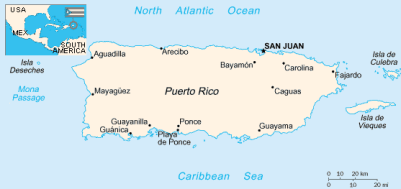NCI-supported facility to conduct cancer trials breaks ground in Puerto Rico
Submitted on 2 April 2014 - 6:38pm
This article is reproduced by CienciaPR with permission from the original source.
CienciaPR Contribution:
Original Source:
By:

The Puerto Rican government has allocated $196 million dollars to build a 287,000 sq. ft., 96-bed, cancer hospital in San Juan. The new hospital, which will provide cancer treatment and conduct clinical trials, is the first of its kind in the Caribbean.
The hospital broke ground at a national ceremony hosted by the Governor of Puerto Rico, Alejandro Garcia-Padilla, in February 2014 and has a projected opening date of April 2016. The National Cancer Institute was represented by Sanya A. Springfield, Ph.D., director of the Center to Reduce Cancer Health Disparities.
A partnership, formed through an NCI grant now known as Partnerships to Advance Cancer Health Equity (PACHE), was one of the catalysts for a Puerto Rican law being passed that formally established the University of Puerto Rico Comprehensive Cancer Center in 2004. This law also assigned construction of a cancer hospital to be known as the Puerto Rico Comprehensive Cancer Center.
Over twelve years ago, the University of Puerto Rico (UPR) began a partnership with the MD Anderson Cancer Center, Houston, one of NCI’s 68 designated Cancer Centers, when it was awarded a PACHE grant by NCI’s Center to Reduce Cancer Health Disparities. The purpose of this grant was to foster long-term, mutually beneficial partnerships that could bring superior cancer care to people who live in underserved communities.
“Turning a dream into this wonderful reality took years of effort and dedication,” Springfield said in her opening remarks at the ground breaking ceremony. “The driving force behind all of this has largely been this partnership. A huge debt of gratitude is owed to the leadership of the UPR Medical Sciences Campus.”
To date, NCI has invested over $18 million dollars to support the cancer research initiatives of the University of Puerto Rico and MD Anderson Cancer Center partnership. These funds have been used to promote basic science, clinical and epidemiological research in cancer prevention and control, and the development of educational programs for faculty – including training of 27 Puerto Rican postdoc fellows and cancer researchers.
Specifically, investigators at the University of Puerto Rico Cancer Center and MD Anderson Cancer Center have, or are, developing programs that could reduce the burden of cancer in Hispanics worldwide. “We also look to the University of Puerto Rico Cancer Center for leadership in cancer control and cancer research across the Caribbean and Central America,” added Edward L. Trimble, M.D., director of NCI’s Center for Global Health.
To date, the achievements of University of Puerto Rico Cancer Center and MD Anderson Cancer Center grantees include, but are not limited to, studies of head and neck cancer progression and outcomes in patients in Puerto Rico as well as studies of the epidemiology of acute leukemia in Puerto Ricans and people in Spain and Peru.
Also, because the incidence of breast cancer has risen dramatically over recent years in Puerto Rico, studies are underway on molecular mechanisms associated with growth and survival of metastatic breast cancer cells; bone metastases in breast cancer patients; and the expression of the epidermal growth factor receptor, which can cause cells to divide at abnormally high levels. This last study is specifically looking at Hispanic women diagnosed with breast cancer in Puerto Rico compared to women breast cancer patients in Houston.
There are 3.7 million people living in Puerto Rico, a U.S. territory and most are Hispanic. According to the U.S. Census Bureau, the Hispanic population of the U.S. as of July 1, 2012, was 53.0 million, making people of Hispanic origin the nation's largest ethnic or racial minority. Hispanics constituted 17 percent of the nation's total population. It is projected that by July 2060, the Hispanic population in the U.S. will reach 128.8 million, constituting approximately 31 percent of the total population. The health of today's Hispanic population will play an important role in shaping future U.S. health care needs, including those related to cancer.







